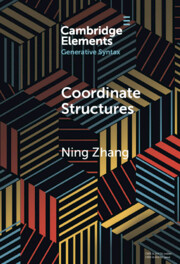161 results
Bone-artefact production in late Neolithic central China: evidence from Pingliangtai
-
- Journal:
- Antiquity , First View
- Published online by Cambridge University Press:
- 15 April 2024, pp. 1-21
-
- Article
-
- You have access
- Open access
- HTML
- Export citation
Functional connectivity of the amygdala subregions and the antidepressant effects of repeated ketamine infusions in major depressive disorder
-
- Journal:
- European Psychiatry / Volume 67 / Issue 1 / 2024
- Published online by Cambridge University Press:
- 04 April 2024, e33
-
- Article
-
- You have access
- Open access
- HTML
- Export citation
Super-efficient Reduction of 4-nitrophenol Using Raw Pelagic Clays as Catalysts
-
- Journal:
- Clays and Clay Minerals / Volume 71 / Issue 6 / December 2023
- Published online by Cambridge University Press:
- 02 April 2024, pp. 745-759
-
- Article
- Export citation
DNA Methylation Mediated the Association of Body Mass Index With Blood Pressure in Chinese Monozygotic Twins
-
- Journal:
- Twin Research and Human Genetics , First View
- Published online by Cambridge University Press:
- 31 January 2024, pp. 1-12
-
- Article
- Export citation
Application of ultrasound multimodal imaging in the prediction of cervical tuberculous lymphadenitis rupture
-
- Journal:
- Epidemiology & Infection / Volume 152 / 2024
- Published online by Cambridge University Press:
- 30 January 2024, e28
-
- Article
-
- You have access
- Open access
- HTML
- Export citation
Formation of 0.84 Nm Hydrated Kaolinite as an Environmentally Friendly Precursor of a Kaolinite Intercalation Compound
-
- Journal:
- Clays and Clay Minerals / Volume 61 / Issue 5 / October 2013
- Published online by Cambridge University Press:
- 01 January 2024, pp. 416-423
-
- Article
- Export citation
Clay mineralogy across the P-T boundary of the Xiakou section, China: Evidence of clay provenance and environment
-
- Journal:
- Clays and Clay Minerals / Volume 56 / Issue 2 / April 2008
- Published online by Cambridge University Press:
- 01 January 2024, pp. 131-143
-
- Article
- Export citation

Coordinate Structures
-
- Published online:
- 21 November 2023
- Print publication:
- 14 December 2023
-
- Element
- Export citation
Spillover effects of violent attacks and COVID-19 exposure on mental health of health professionals: A two-phase quasi-natural experiments study in Northwest China
-
- Journal:
- Cambridge Prisms: Global Mental Health / Volume 10 / 2023
- Published online by Cambridge University Press:
- 26 October 2023, e76
-
- Article
-
- You have access
- Open access
- HTML
- Export citation
Dissociation between neuroanatomical and symptomatic subtypes in schizophrenia
-
- Journal:
- European Psychiatry / Volume 66 / Issue 1 / 2023
- Published online by Cambridge University Press:
- 13 September 2023, e78
-
- Article
-
- You have access
- Open access
- HTML
- Export citation
EXPERIMENTAL STUDY ON THE CHARGE-EXCHANGE CROSS-SECTIONS OF LOW-ENERGY CARBON IONS IN HELIUM AT GXNU
-
- Journal:
- Radiocarbon , First View
- Published online by Cambridge University Press:
- 27 July 2023, pp. 1-12
-
- Article
- Export citation
RADIOCARBON AND TRITIUM MEASUREMENTS AT THE GXNU-AMS FACILITY
-
- Journal:
- Radiocarbon , First View
- Published online by Cambridge University Press:
- 23 May 2023, pp. 1-10
-
- Article
- Export citation
Pre-treatment functional connectivity of the cingulate cortex predicts anti-suicidal effects of serial ketamine infusions
-
- Journal:
- European Psychiatry / Volume 66 / Issue 1 / 2023
- Published online by Cambridge University Press:
- 31 March 2023, e31
-
- Article
-
- You have access
- Open access
- HTML
- Export citation
Understanding the effects of hand design on embodiment in virtual reality
-
- Article
-
- You have access
- HTML
- Export citation
Disrupted dynamic functional connectivity of hippocampal subregions mediated the slowed information processing speed in late-life depression
-
- Journal:
- Psychological Medicine / Volume 53 / Issue 14 / October 2023
- Published online by Cambridge University Press:
- 20 February 2023, pp. 6500-6510
-
- Article
-
- You have access
- Open access
- HTML
- Export citation
A novel multi-shot target platform for laser-driven laboratory astrophysics experiments
-
- Journal:
- High Power Laser Science and Engineering / Volume 11 / 2023
- Published online by Cambridge University Press:
- 09 February 2023, e17
-
- Article
-
- You have access
- Open access
- HTML
- Export citation
Improvement of soil aggregate-associated carbon sequestration capacity after 14 years of conservation tillage
-
- Journal:
- Experimental Agriculture / Volume 58 / 2022
- Published online by Cambridge University Press:
- 28 November 2022, e55
-
- Article
- Export citation
Latin American Studies in the People's Republic of China: Current and Future Prospects
-
- Journal:
- Latin American Research Review / Volume 23 / Issue 1 / 1988
- Published online by Cambridge University Press:
- 12 October 2022, pp. 123-132
-
- Article
-
- You have access
- Export citation
Nonlinear Bragg scattering of surface waves over a two-dimensional periodic structure
-
- Journal:
- Journal of Fluid Mechanics / Volume 946 / 10 September 2022
- Published online by Cambridge University Press:
- 04 August 2022, A25
-
- Article
- Export citation



